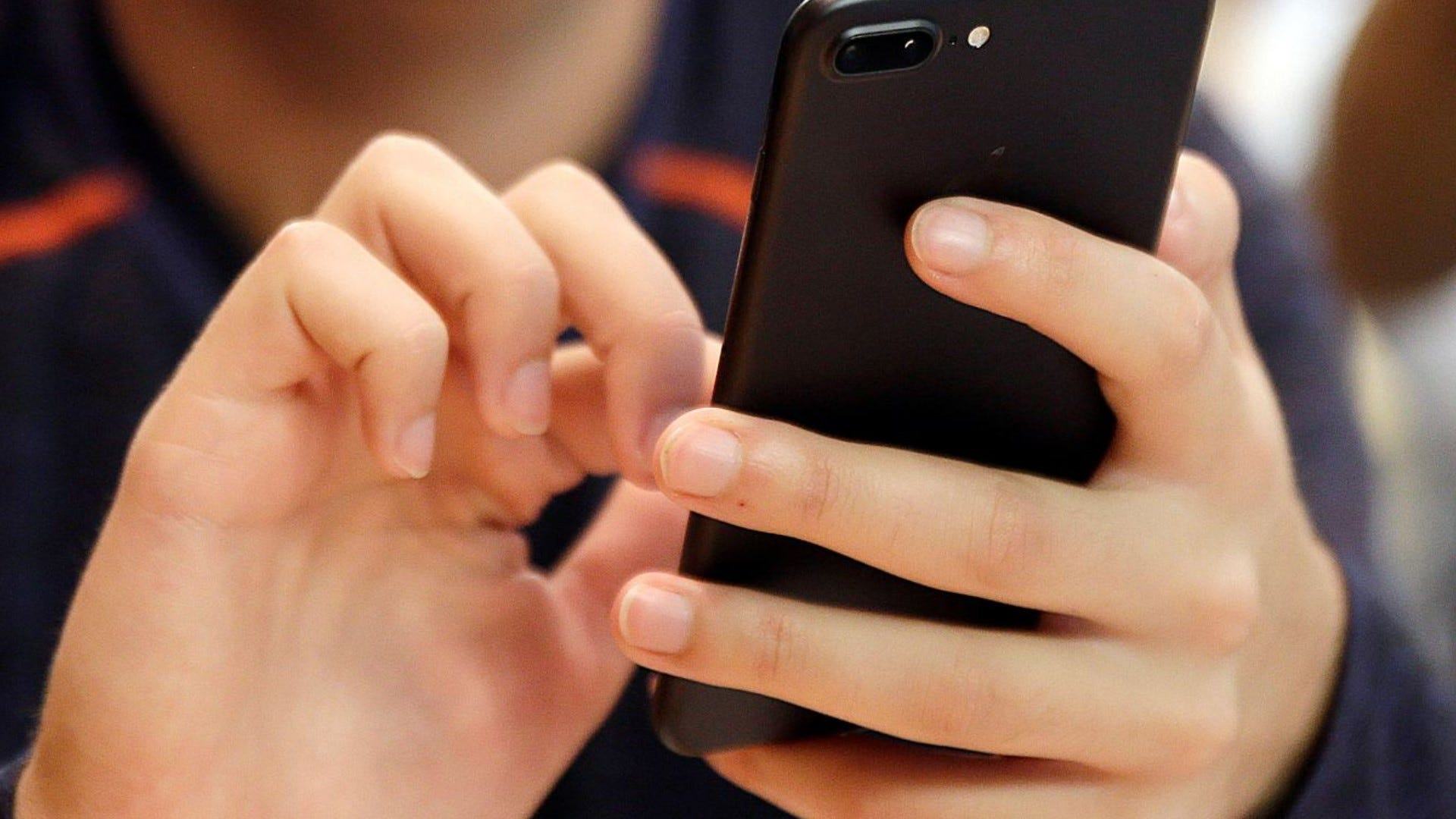Will DeWine Listen to Administrators, Science?
BY NICK ROGERS

CHARDON - On March 13, Governor Mike DeWine joined a roundtable discussion with Ohio school superintendents, schoolboard members, and teachers to discuss the hot button topic of adolescent Smart phone usage on campus and the positive effects of efforts already implemented to ban or limit the technology during the school day. While the governor acknowledged the consensus that Smart phones at school are causing a plethora of problems, he fell short of committing to a statewide bill addressing the issue. However, at his recent State of the State address, DeWine changed his tune.
Among the complications witnessed, for years, by administrators first-hand, Smart phone usage in schools has caused a lack of academic focus, limited peer-to-peer social interaction, a higher rate of suicidal thoughts, and a greater likelihood of bullying or being bullied.
According to the National Center for Education Statistics, almost 77% of U.S. schools banned cell phones on campus for non-academic purposes in 2020, up from 65% only five years prior. As it currently stands, Ohio leaves it to each school district to enforce their own rules for students’ use of cell phones during school hours. Fairborn City Schools, among others, however, have already implemented a strict policy of locking up students’ phones in magnetic pouches.
Gene Lolli, superintendent of Fairborn City Schools, has experienced his fair share of disciplinary issues linked to students; Smart phone usage. Of the school’s 1000 students, over half of them have had behavioral referrals directly related to Smart phone use during the school day. Leading up to the decision to lock up students’ phones, Lolli expected backlash from students and parents but, while some parents have expressed concern about students potentially not having immediate access to their phones during an emergency, he has been pleasantly surprised at the results of the rule implementation overall.
“It was such a great decision, they told us I could have run for governor,” Lolli jokingly told DeWine.
Diana Rigby, a Dublin School Board member, told DeWine, “I think our students are happier without that cell phone. They may not know it, and it’s our job to show them that we can get back to a point where classrooms are conducive to learning, students are active, lunchrooms are active, playgrounds are active.”
Lt. Gov. Jon Husted, who also attended the discussion, believes that Smart phones (and watches) are more than just a distraction for students, but also the cause of major mental health problems.
“It’s harming their academic performance and their mental health and they need a place, at least for several hours a day to go and be students and have social interactions and have academic opportunities that are away from Tic-Tok and Snapchat and all of these things that are distractive and addictive in their lives,” Husted said.
A recently published Pew survey backs up Husted’s assertions.
DeWine, speaking to reporters after the roundtable, said, “With the gain in students’ mental health and gain in students’ ability to learn, it’s certainly worth the effort to get this done.” But when asked whether or not he would pursue a state-wide bill mandating schools implement phone restrictions, DeWine remained noncommittal. “I think that we should let the system work…and the way you let the system work is that a good idea catches on.”
At his recent State of the State address, however, DeWine pivoted on the issue and specifically backed a newly proposed law – HB 485, sponsored by reps. Tom Young and Phil Plummer – that aims to limit students’ Smart phone use to educational and emergency purposes only.
“These phones are detrimental to learning,” DeWine said. “They are detrimental to our kids’ mental health and they need to be removed from the classroom,” DeWine said at the address.
In an interview with WDTN Dayton, rep. Plummer said, “You know, we have teachers getting assaulted that are taking phones from students because, you know, a lot of times the phone is the student’s lifeline. It’s all they have in life. So, we just want to make a safe environment and a good learning environment.”
Young added, “We’re looking forward to listening to them, and that’s important about our bill. We want to have people come in. We want to hear what they have to say.”
The bill currently sits in committee.
Trust The Science
The worries shared by parents and educators regarding students’ Smart phone use are backed not only by firsthand observation of behavioral detriment, but by scientific study and meta-data analysis.
A Swiss study, published in 2018, linked adolescent cell phone use to possible memory deficiency. The study, which included almost 700 participants ages 12 to 17, took place over a period of a year and centered around the parts of the brain where memory function is located; the right side of the brain; the part of the brain against which many of us, young and old alike, hold a cell phone.
A Korean study, published in 2023, found strong associations between Smart phone use longer than four hours a day and lowered confidence, sleep deprivation, depression, suicidal thoughts, and substance abuse in adolescents. The study, which used data primarily from 2020, was comprised of 40,998 participants.
Beyond cognitive and behavioral concerns about teens’ Smart phone use lies the issue of immediate and cumulative biological damaged caused by RF (Radio Frequency) EMF (Electromagnetic Fields) given off by Smart phones (and Wi-Fi). A meta-data analysis was published in 2021 – a joint venture between Korea’s National Cancer, Seoul Medical University, and UC Berkley – using international journal data from 1999 to 2015. The results showed that only 17 minutes spent on a cell phone for a period of 10 years significantly increases the risk of developing tumors.
This, of course, is not an Earth-shattering development. Independent scientists and safe-technology advocates have, for many years, been sounding the alarm over the proliferation of wireless technology and its proven harm to the human biological system.
It is widely known that RF is exponentially more harmful to the developing brains of children and teens, primarily because of their thinner skulls. And yet, the FCC – and the International Commission on Non-Ionizing Radiation Protection (ICNIRP) in Europe – have not only held firm to their decades-old guidelines, but they have doubled down on the overall fraudulent notion that EMFs are only harmful if they heat the skin (thermal).
This baseless notion has allowed such bills as the Secure 5G and Beyond Act of 2020 to be passed with little to no scrutiny in Congress. Bills such as these – like the pending HR 3557 – have greatly limited local control over the buildout of cell phone towers, including “small cell” antennas near and on top of schools and hospitals; buildings containing the most vulnerable members of our society.
In 2021, Environmental Health Trust (EHT) won a DC District Court of Appeals case against the Federal Communications Commission (FCC), demanding that they update their outdated 1996 health guidelines regarding EMF safety limits. To date, the FCC has not addressed the issue and no one seems to be holding them accountable.
In 2012 rep. Dennis Kucinich introduced HR 6358 – the Cell Phone Right to Know Act – a bill with the purpose “…To examine, label, and communicate adverse human biological effects associated with exposure to electromagnetic fields from cell phones and other wireless devices, and for other purposes.” The bill was never passed.
So it seems we have reached a crossroads in the dilemma of Smart phone usage and education, and it comes at an interesting time as more and more schools are introducing digital tools such as virtual reality (VR), often integrating the student’s own cell phone to incorporate the artificial intelligence (AI) technology.
Governor DeWine, with his support of HB 485, believes that an all-out ban of Smart phones in schools is not necessary, but he clearly supports specific limitations that he believes can be successfully implemented on a state-wide basis just as they have been in individual cases.
Only time will tell, but for those schools who have already made the decision to enforce phone bans/limitations, the evidence seems clear: kids are happier, healthier, and more attentive. For now, finding a school with these restrictions is up to the parent, as there is no guarantee that universal state-wide guidelines will ever come to pass.




